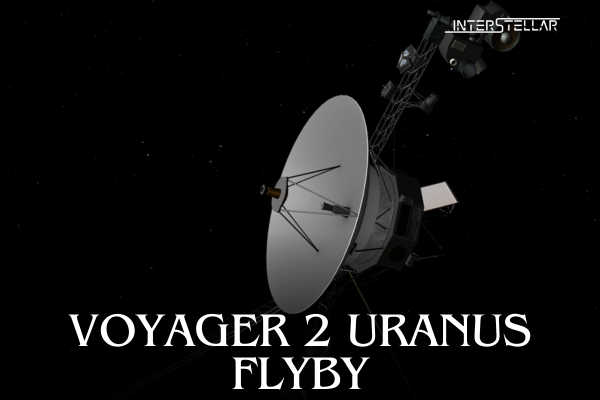Voyager 2’s Historic Flyby of Uranus: New Findings Reveal a Cosmic Coincidence
When NASA’s Voyager 2 spacecraft passed by Uranus in 1986, it delivered the first and only close look at this tilted, unusually rotating planet. During the flyby, scientists discovered new moons and rings, but they also encountered baffling mysteries. The radiation particles around Uranus defied existing theories on magnetic fields, establishing Uranus as an exceptional planet in our solar system.
A Unique Snapshot: Understanding Uranus’ Magnetosphere
An artist’s rendering illustrates Uranus’ magnetosphere before and during the Voyager 2 flyby. The first panel shows the planet’s magnetosphere, a protective magnetic bubble, in its usual state. In contrast, the second panel displays how solar weather distorted this magnetic bubble just as Voyager 2 arrived, giving scientists a skewed view. Recent research on this 38-year-old data reveals that Voyager 2 flew by during a rare solar weather event. This cosmic coincidence compressed Uranus’ magnetosphere and presented an unusual set of readings.
“If Voyager 2 had arrived just a few days earlier, it would have observed a completely different magnetosphere at Uranus,” explained Jamie Jasinski of NASA’s Jet Propulsion Laboratory, lead author of a new study published in Nature Astronomy. “The spacecraft saw Uranus in conditions that only occur about 4% of the time.”
Insights into Magnetospheres and Solar System Dynamics
Magnetospheres, like Earth’s, are protective magnetic bubbles that shield planets with magnetic cores from ionized gas, or plasma, originating from the Sun. Voyager 2’s data revealed an unexpectedly intense radiation belt around Uranus, second only to Jupiter’s. However, unlike Jupiter, there was no obvious plasma source to sustain this radiation. In fact, the planet’s magnetosphere was surprisingly sparse in plasma.
Scientists were also puzzled by the absence of water ions, which the five large moons of Uranus should produce, as other icy moons do. This absence suggested that Uranus’ moons might be geologically inactive
Uncovering the Role of Solar Wind on Uranus’ Magnetosphere
The new analysis has identified the solar wind as a potential cause of the unusual data. As plasma from the Sun compressed Uranus’ magnetosphere, it likely pushed plasma out of the system. This event may also have increased the radiation belt’s activity by injecting electrons, temporarily intensifying the magnetosphere.
This explanation hints that the major moons of Uranus could still be geologically active. Researchers now believe the moons might have been releasing ions, but the solar event temporarily cleared the plasma, making it seem absent. The possibility of active moons renews interest in studying Uranus’ system, which has been highlighted in the National Academies’ 2023 Planetary Science Decadal Survey as a high-priority mission target for NASA.
Linda Spilker, a Voyager 2 mission scientist, recalls the sense of anticipation as the spacecraft sent back data from Uranus. “The flyby was packed with surprises, and we were searching for an explanation of its unusual behavior. The magnetosphere Voyager 2 measured was only a snapshot in time,” said Spilker. Now leading Voyager 2’s science team, she believes this research could reshape our understanding of Uranus.





